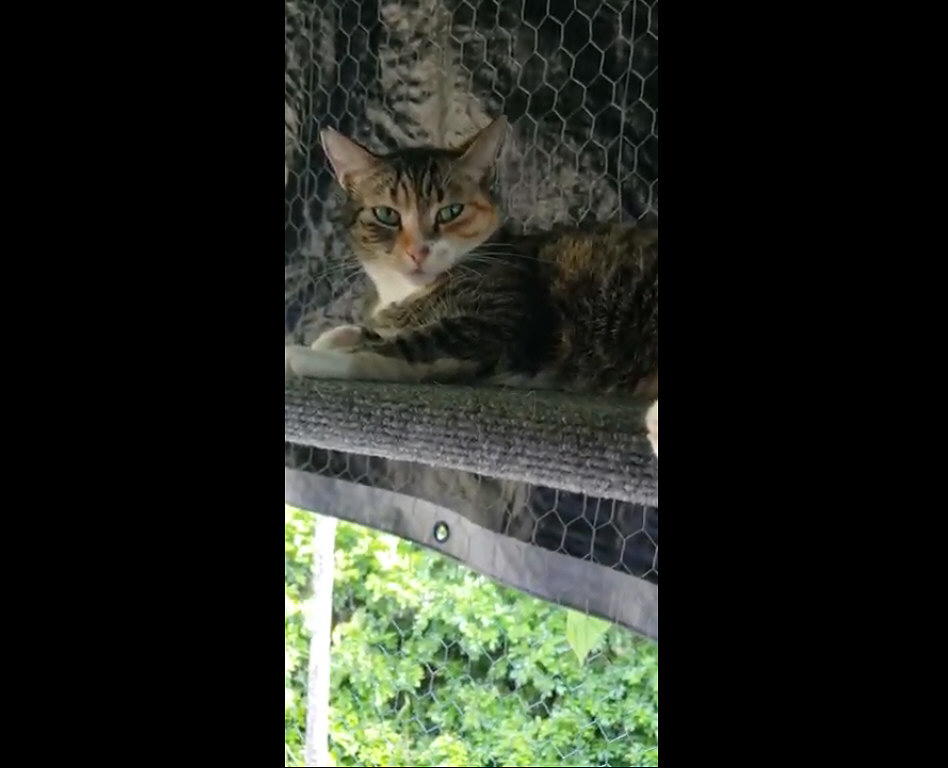A Free-Roaming Cat Family and Me (Part 4)

During frequent downpours in our rainy mountain valley, the cat family stayed dry. Mama Cat moved them from patio to under the house when they turned six weeks old. They were safer there, sleeping on top of boogie boards and ice chests and Barry’s and my cardboard boxes.
I’m glad this is Mama Cat’s last litter. Cats who keep having babies become more aggressive because they’re constantly fighting to defend their new litters of kittens. My hairdresser says her neighbor’s cat is constantly birthing kittens, so she’s always ready to fight. She tells me that Queen Cat, as multiple-litter females are called, has beaten up two neighborhood dogs so far.
I spend hours Googling articles about community cats. Their ancestors were domesticated. Cat owners who abandon them force the cats to try and survive in the wild with no food, no water, and no birth control. Inhumane owners, unfortunate cats. What’s a homeless kitty to do?
People say feeding free-roaming cats is feeding the problem. I agree, unless feeding is done as a prelude to trapping, to get cats used to eating in a certain place. Otherwise, feeding these animals increases their ability to give birth to even more kittens who are destined to suffer and die premature deaths. Getting these cats off the streets prevents not only their own suffering, but also the suffering of their kittens.
My friend Emily, who helps care for a cat colony, said Trap-Neuter-Release (T.N.R.) was the humane thing to do. Getting cats fixed stabilized feral cat colonies, improved and protected cats’ lives, and answered community needs. (For more details on T.N.R., check out the article at https://www.alleycat.org/resources/why-trap-neuter-return-feral-cats-the-case-for-tnr/).
Some organizations trying to get rid of colonies of feral cats preach “catch and kill”—trap all the feral cats and euthanize them. This doesn’t work because of the vacuum effect—some trap-savvy cats are left uncaught, and their offspring quickly fill the gap left behind by the missing cats.
Horror stories abound of people’s inhumane treatment of feral cats. I’ve seen pictures on a cat forum on Facebook that would break your heart. I read about hunters who shoot cats, skin them, and sell their fur. I met one man who hated feral cats. A friend told me that man seduced cats with cans of tuna, then bashed their heads in with a baseball bat. I wondered if he was a serial killer, because I read that violent people who are cruel to animals often are.
In Hawai’i, anyone can check out a trap from the Humane Society or Cat Friends for $100 deposit – the money is returned when the trap comes back. Cat Friends charges $5 to neuter a cat. They notch the ear (left for males, right for females. Why? Because females are always right, of course:) They also chip the animal. Cats are supposed to be returned to the zip code from whence they came.
Bird advocates claim feral cats kill billions of birds every year. Those cats must be faster than my little prey-stalking-belly-creepers. Most times, when my kitties run after a pigeon pecking grain on the ground, the bird quickly flies away. The cats don’t even get close.
Sometimes, however, they do. A few months after the cat family was fixed, feathers littered the grass and ground and a bloody offering of innards appeared in front of the kitchen door. Feeling like an accomplice to murder, I retired the feeder, gingerly moved their gift elsewhere, and hosed down the garage.
Read More:
Part 1
Part 2
Part 3
Part 4
Part 5

Lizbeth Hartz is the author of the true crime, true love memoir Angel Hero, Murder in Hawaii, A True Story. Buy it on Amazon or sign up to read the 1st chapter free.